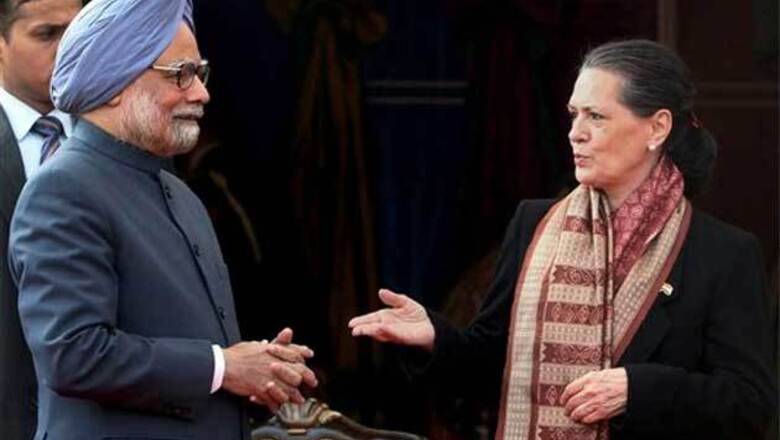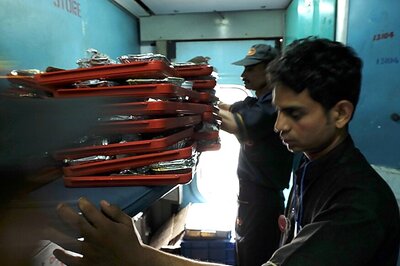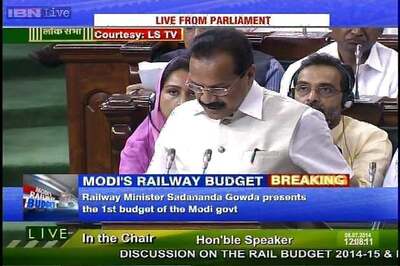
views
New Delhi: It is proving to be a very tough week in office for the Manmohan Singh Government with the Supreme Court delivering two strong verdicts within a space of two days related to 2G spectrum allocations. While on Tuesday the Supreme Court had observed that the sanction by a competent authority for the prosecution of a public servant had to be granted within a specified time frame, on Thursday the apex court delivered a massive blow to the Central Government scrapping all the 122 2G spectrum licences granted by former telecom minister A Raja since January 10, 2008.
On both occasions it was the bete noire of the UPA Administration, Janata Party President Subramanian Swamy, whose petitions targeted the highest echelons of the UPA.
Even as a jittery government looked for face-saving answers and tried to deflect the entire blame related to the scrapping of the 2G licences on Raja and the Bharatiya Janata Party-led National Democratic Alliance government, which had introduced the first-come, first-serve policy, an emboldened Opposition bayed for its blood.
On Tuesday, the Supreme Court had accepted Swamy's petition against the Prime Minister's Office (PMO) in the 2G case, saying that he indeed had the locus to seek sanction from Prime Minister Manmohan Singh for the prosecution of Raja in the 2G scam. While Singh was given a clean chit by the apex court, the court hauled up his advisers in the PMO and the Law Ministry for not giving the right advice to him.
But the Supreme Court verdict on Thursday cancelling 122 licences has delivered a serious punch not only on the Central Government but also on the telecom sector, sending the stock prices of the affected companies crashing and forcing banks with exposure to the sector to have look at their balance sheets afresh.
The 2G scam has already seen Raja and DMK MP Kanimozhi land in jail and the UPA losing its way and almost becoming a lame duck government in spite of winning a comfortable majority in the 2009 Lok Sabha elections.
While Home Minister P Chidambaram on Thursday got partial relief about his alleged role in the 2G scam with the Supreme Court referring the matter of whether his role should be investigated back to the Patiala House Court of Justice OP Saini. The bench comprising justices GS Singhvi and AK Ganguly said that its order should in no way influence the proceedings before the trial court while declining to give directions to the Central Bureau of Investigation (CBI) on the issue.
The dark clouds over Chidambaram have not lifted as the Patiala House Court is scheduled to hear the plea about his alleged role on February 4. If the court rules that Chidambaram’s role should be investigated, continuing in the Union Cabinet may become difficult.
Swamy has been claiming that Chidambaram should be made a co-accused in the spectrum scam along with Raja. Swamy, in his plea, has stated that the Finance Ministry repeatedly pointed out that spectrum allocation could not be on the basis of the entry fee of 2001, and had earlier backed a market-discovered pricing mechanism for allocating spectrum.
He had also claimed that since the Finance Ministry cannot be overruled by the Telecom Ministry, it would have been impossible for the then telecom minister A Raja to move ahead without the concurrence of the then finance minister P Chidambaram.
Swamy has insisted that although Chidambaram recognised that the most transparent method of allocating the spectrum would be through an auction, he did not oppose the pricing on the basis of 2001 system.
Swamy has claimed that even though the Prime Minister favoured the auction of spectrum, Raja and Chidambaram jointly decided on a different mode of spectrum-pricing and allowed the licences to be traded, and conveyed their decision to the Prime Minister. Chidambaram also overruled his own officials in this regard, according to Swamy.
Meanwhile, one more case with the potential of further embarrassing the Centre comes up in the Supreme Court on Friday when the petition of Army Chief General Vijay Kumar Singh regarding the controversy over his actual date of birth is taken up.
While the date of birth controversy has been festering for over 36 years with both General Singh and the Centre blaming the Army for not doing anything to rectify the error leading to the unsavoury situation of a serving Army Chief moving the Supreme Court, the silence and the reluctance of the Defence Ministry to resolve the issue is more baffling.
General Singh, a para-commando and veteran of 1971 Indo-Pak war, has been contending that May 10, 1951 should be treated as his actual date of birth as this is what was mentioned in his matriculation certificate but the Defence Ministry has rejected it as May 10, 1950 is the date entered in his UPSC form for the NDA.
If General Singh's date of birth is considered to be May 10, 1951 he will retire in March 2013; if May 10, 1950 is accepted, then his tenure will come to an end in May 2012. The difference of one year will have an effect on who will succeed him as the next Army Chief.
With more judicial bombs waiting to explode, the remaining days of UPA-II do not promise to be trouble-free.




















Comments
0 comment